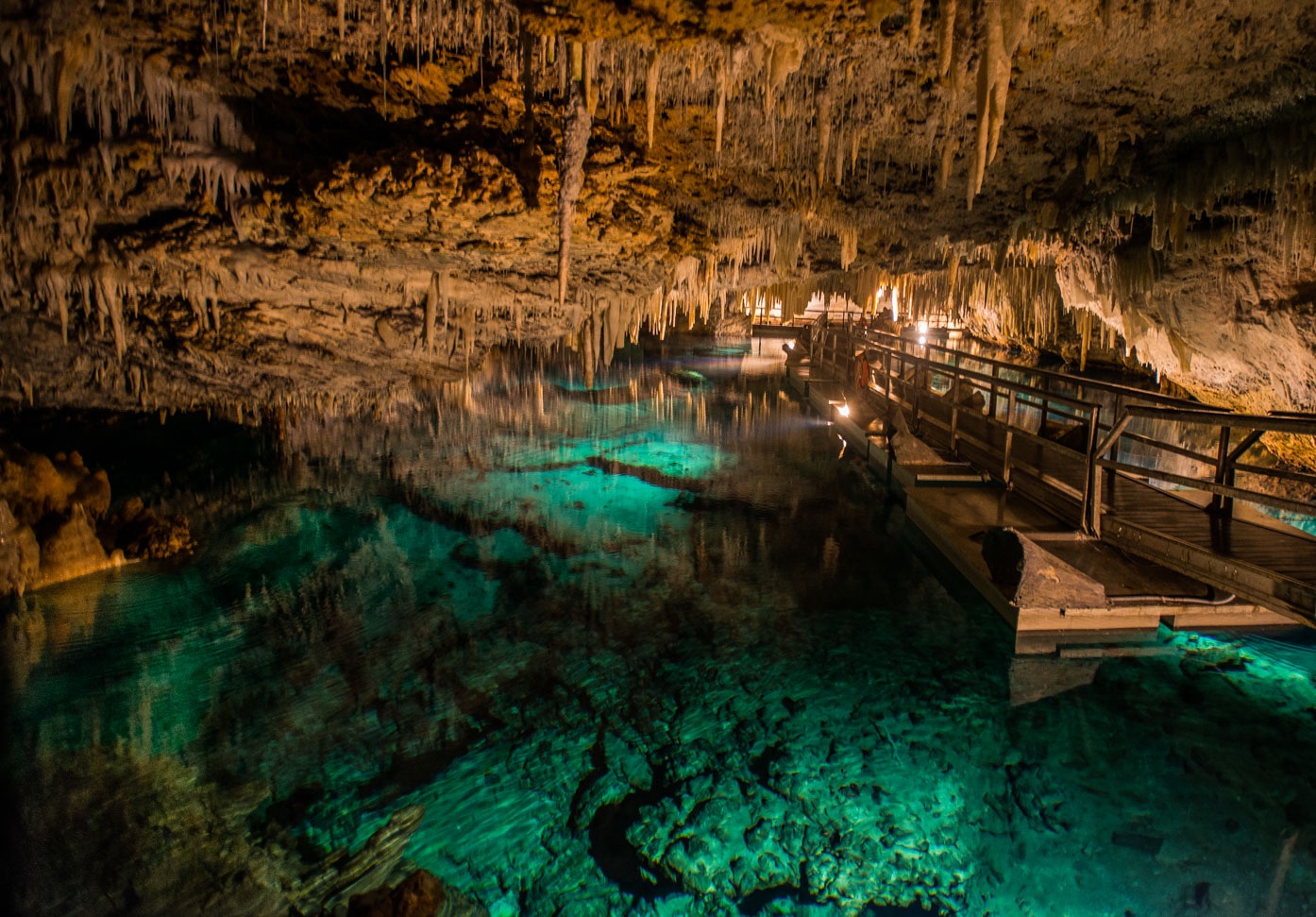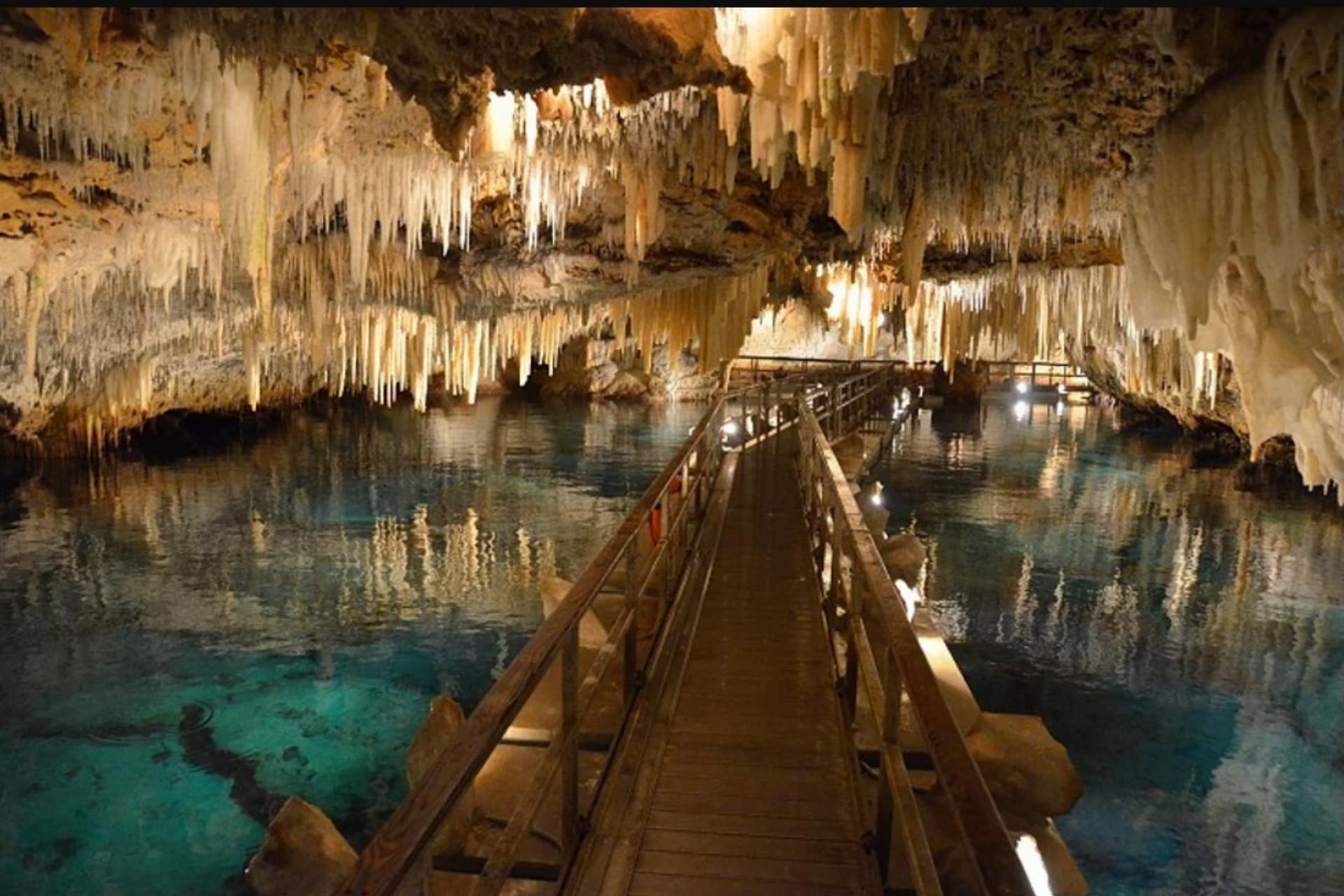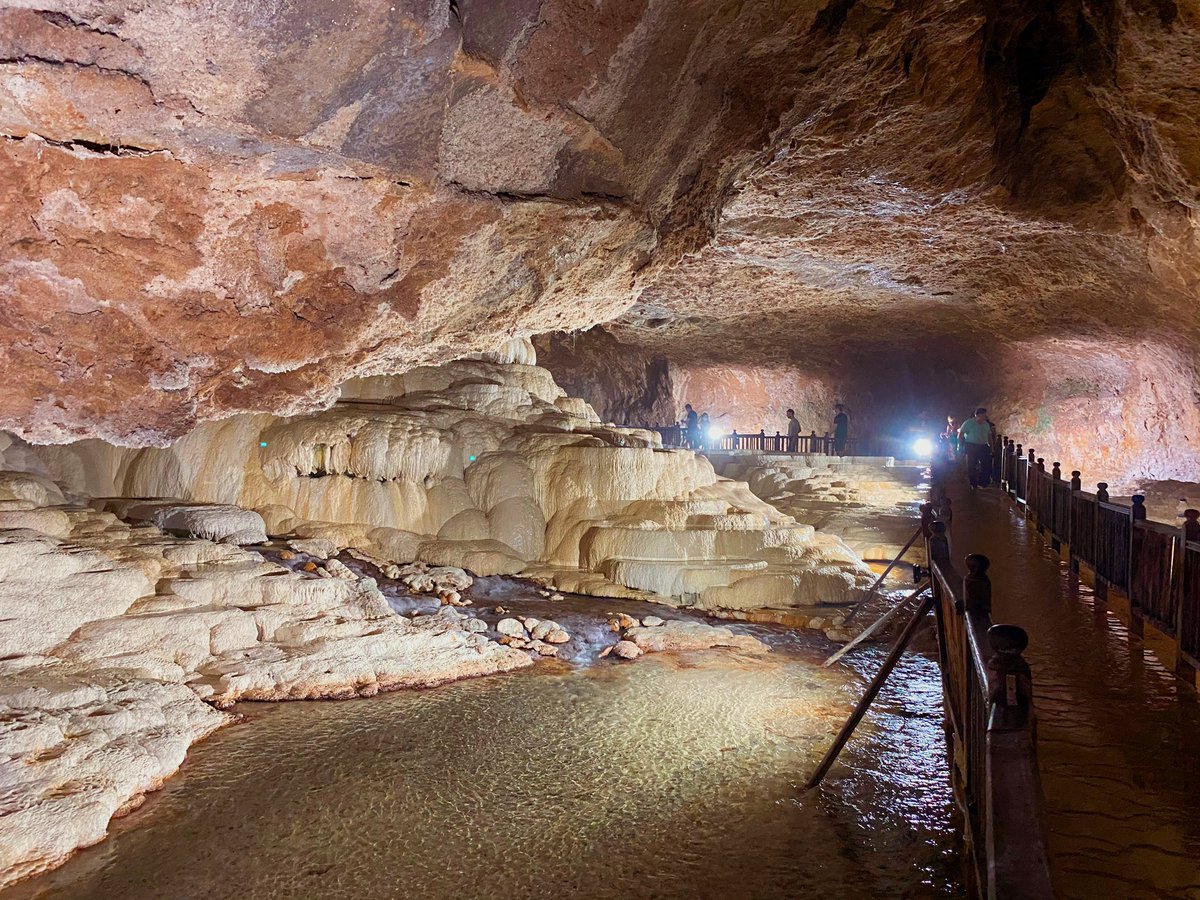So, you've walked on the snow-white travertines of Pamukkale and lost yourself in the ancient streets of Hierapolis. But what if I told you that all this beauty has a twin hidden underground? Its name is Kaklık Cave, a mysterious sibling waiting for you in Denizli's Honaz district, just 30 kilometers from the city center.1 This place is unlike any cave you know; it's a magical gallery where nature has carved its earthly masterpiece once more, this time underground. If you're looking for a different kind of adventure, this article will give you a complete guide to the things to do in Kaklık Cave. Fasten your seatbelts, we're taking a journey into the heart of the earth!
See the travertines inside the cave, known as the Underground Pamukkale
The moment you step onto the wooden stairs leading down into the cave, the view that greets you is literally breathtaking.2 Snow-white, terraced travertine pools shimmering in the dim light of the underworld... It's as if they took Pamukkale and carefully hid it underground. That's why it's called Little Pamukkale or Cave Pamukkale.3 These unique formations have been created over thousands of years by the waters from the nearby Haydarbaba Spring, which slowly deposit calcium carbonate.4
One of the things that makes this place special is that you can experience this beauty in a very safe and comfortable way. Thanks to the approximately 190-meter-long wooden walkway that encircles the interior of the cave, you can stroll among the travertines, right next to the flowing waters.5 As one visitor put it, the color of the travertines here has an even whiter appearance than Pamukkale.5 These steps you see are not a frozen monument; they are a living structure, continuing to grow at an imperceptible pace even as you stand there.

Feel the mystical atmosphere of the cave where sulfurous thermal water flows
Kaklık Cave doesn't just offer a visual feast; it promises an experience that appeals to all your senses. When you enter, you'll notice a faint smell of sulfur—don't be surprised.7 This is the most distinct feature of the thermal water that is the lifeblood of the cave. Although it might seem a bit strange at first, you quickly get used to this scent, and it becomes part of the cave's authentic atmosphere.2 The air temperature inside the cave remains constant throughout the year, making it a warm shelter to escape the winter cold and a cool oasis in the summer.8
The clear, colorless thermal water flowing through the cave has a $pH$ of 6.85 and is rich in minerals like calcium and magnesium.1 It is rumored that this water is good for some skin conditions; there are even visitors who come seeking a cure for eczema.8 But the cave's most magical touch is hidden on the walls where daylight seeps through a collapse in the ceiling. The dense moss and small-leafed ivy growing on these walls take on different shades of green depending on the angle of the light during the day, giving the cave a living, breathing soul.10

Examine the dripstones, stalactites, and stalagmites inside the cave
The surprises in Kaklık Cave don't end with the travertines. When you look up or observe your surroundings more closely, you'll encounter another natural wonder adorning the cave: dripstones, stalactites, and stalagmites.3 These formations are the most beautiful proof that the cave is an active structure, meaning it is still developing.1 Each one is a work of art, formed by the millennia-long patience of a single mineral-rich water droplet.
To put it simply, stalactites are like icicles hanging down from the ceiling, while stalagmites are towers rising from the ground. This is what makes Kaklık Cave so special. Usually, caves are famous for either their travertines or their stalactites and stalagmites. However, Kaklık generously offers you two different underground worlds in a single visit. On one side, you have the flowing terraces reminiscent of Pamukkale, and on the other, these sculptures that are the product of thousands of years of patience. This geological diversity elevates Kaklık from being just an underground copy to a unique natural wonder in its own right.

Don't End Your Denizli Adventure Here!
If you want to continue your explorations in Denizli after emerging from the magic of Kaklık Cave, you have some fantastic options. Since you're already so close, you can take a journey back in time on the magnificent streets of the Laodicea Ancient City, home to one of the Seven Churches mentioned in the Bible.If you are interested in underground worlds, you can add Keloğlan Cave, famous for its rich stalactites and stalagmites, to your list of places to visit in Denizli.
Frequently Asked Questions (FAQ)
Where is Kaklık Cave and how do I get there?
Kaklık Cave is located in the Kaklık neighborhood of the Honaz district, 30 km from Denizli city center. Simply follow the Kaklık signs on the Denizli-Ankara highway. You can reach it by driving about 3 km off the main road with your private car, or you can easily get there with the Kaklık minibuses departing from the Denizli bus terminal.9
What are the entrance fee and visiting hours for Kaklık Cave? (2025)
Entrance fees and hours may vary depending on the season. According to the most recent information, the entrance fee was around 20 TL, and the Müzekart (Museum Card) is not valid.14 Visiting hours are generally between 09:00 AM and 07:00 PM.15 However, we strongly recommend checking the official sources of the Honaz Municipality or the relevant tourism directorate for the most up-to-date information before you set out.
What is the best time to visit the cave?
Since the air temperature inside the cave is almost constant throughout the year, it can be visited in any season.8 It's a great alternative to escape the scorching heat in summer or to find a warm refuge in winter. If you don't like crowds, you might prefer to visit on a weekday morning.14 Don't forget to wear comfortable, non-slip shoes as the ground can be wet.
Bibliography:
For more detailed and official information, you can visit the Denizli Provincial Directorate of Culture and Tourism website (https://denizli.ktb.gov.tr/TR-211850/magara-turizmi.html).


 English
English Türkçe
Türkçe